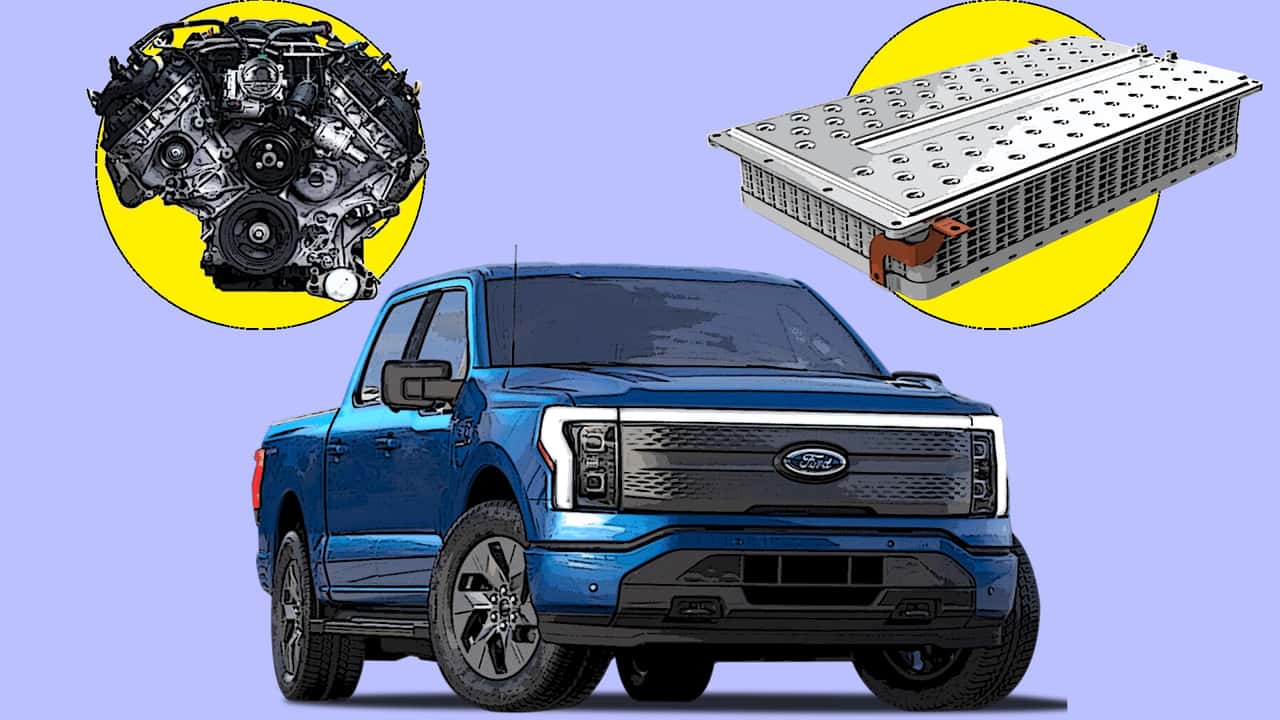- With the market for electric vehicles being cooler than expected, automakers are anticipating the need for combustion powertrains to stick around longer.
- Many manufacturers are instituting a “flexible” approach to maintain factories and supply chains for ICE, hybrid, and BEV platforms.
- This approach could lead to underutilized factories, resulting in instability, layoffs or even plant closures during a crucial period of transition.
The auto industry’s transition from combustion to battery power has been a fickle one. Automakers have had to remain agile to changing market conditions, never keeping 10 toes on the ground at any given time.
The resulting strategy is what many automakers call “flexible”—positioned just enough to meet EV demand while still being able to backpedal if the climate shifts more favorably towards hybrids or combustion power.
And while it’s securely planting manufacturers in the near future, this approach could result in some rather unfavorable long-term stability consequences, according to a new op-ed from Automotive News.

General Motors Fairfax Assembly plant in Kansas City, Kansas
At the forefront of concern is plant capacity utilization—basically, how best to use the factories that these automakers have to make the right amount of the right products.
Optimum plant utilization is about 80%, though automakers in the U.S. currently operate at an average of around 70% utilization according to GlobalData. However, as automakers prepare to build both combustion-powered and battery-powered vehicles, the utilization is expected to drop even further.
GlobalData suggests that by 2030, automakers that take this flexible approach could see some plant utilization figures plummet to under 60%. That number is expected to continue falling throughout 2035.
Michael Robinet, S&P Global Mobility’s executive director of automotive consulting, says that this has him “scared to death.”
“You’ve got some plants that are pigeonholed to be just BEV plants, some plants that are just pigeonholed to be just ICE plants, and some that can do in between,” said Robinet in a previous interview with Automotive News. “In the old world, your ability to move vehicles back and forth between plants was a lot easier, but when you go from ICE to BEV, that flexibility really becomes difficult. It’s not apples and apples. It’s apples and definitely oranges.”
But knowing how to plan for the “right” situation is the hard part. Basically, we’re seeing up and down EV sales as many mainstream buyers wait for more affordable options to arrive. So do automakers invest in hybrids until then? And how much? And what if a competitor gets there first? Or, what happens if they over-produce the “wrong” type of vehicle that’s seeing less demand? Since the supply chains around engines and batteries are so different, it’s hardly as simple as just making a different type of car on the fly.
Now, not all plants will be underutilized. In fact, some are expected to operate at near maximum capacity. However, the plans that are being kept online simply to fill a niche in the market—whether that be combustion or battery power—are expected to see drops. And the consequences of an underutilized plant could include worker layoffs or even full plant closures.
There is no crystal ball that can predict how consumers will react to a changing market. But the uncertainty of how quickly the industry will adopt electrification is driving the entire auto industry, from dealers to suppliers, bonkers.
In recent years, the automotive industry has seen a significant shift towards electric vehicles (EVs) as a means of reducing carbon emissions and combating climate change. While this transition is undoubtedly a positive step towards a more sustainable future, there is a growing concern that staying ‘flexible’ on EVs could be a dangerous approach.
Flexibility in this context refers to the idea that automakers should continue to produce both traditional gasoline-powered vehicles and EVs, allowing consumers to choose which type of vehicle they prefer. While on the surface this may seem like a reasonable approach, there are several key reasons why it could be detrimental in the long run.
First and foremost, the production of gasoline-powered vehicles is a major contributor to greenhouse gas emissions and air pollution. By continuing to produce these vehicles alongside EVs, automakers are effectively prolonging the use of fossil fuels and delaying the transition to a cleaner, more sustainable transportation system. This goes against the goals of reducing carbon emissions and combating climate change, and could have serious consequences for the environment in the future.
Furthermore, staying flexible on EVs could also hinder the growth of the electric vehicle market. As more automakers continue to produce gasoline-powered vehicles, they may not invest as heavily in the development of EV technology or infrastructure. This could slow down the adoption of electric vehicles and make it more difficult for consumers to make the switch to a cleaner form of transportation.
In addition, staying flexible on EVs could also be a risky financial decision for automakers. As more countries and regions around the world set targets for phasing out gasoline-powered vehicles and transitioning to electric vehicles, automakers that continue to produce traditional vehicles may find themselves at a competitive disadvantage. Investing in EV technology now could help them stay ahead of the curve and position themselves as leaders in the growing electric vehicle market.
In conclusion, while staying flexible on EVs may seem like a practical approach in the short term, it could have serious long-term consequences for the environment, the growth of the electric vehicle market, and the financial viability of automakers. To truly make a meaningful impact on reducing carbon emissions and combatting climate change, it is imperative that automakers prioritize the development and production of electric vehicles over traditional gasoline-powered vehicles. Only by fully committing to the transition to electric vehicles can we hope to create a more sustainable and environmentally-friendly transportation system for future generations.

